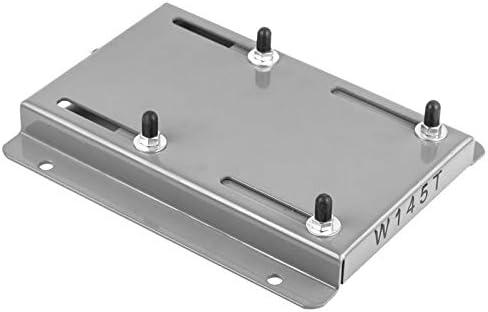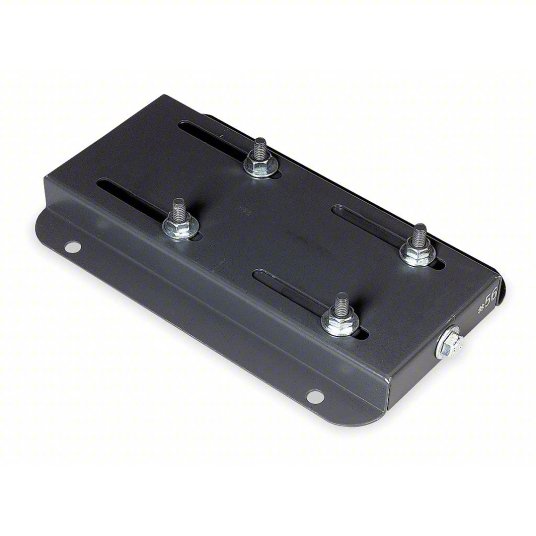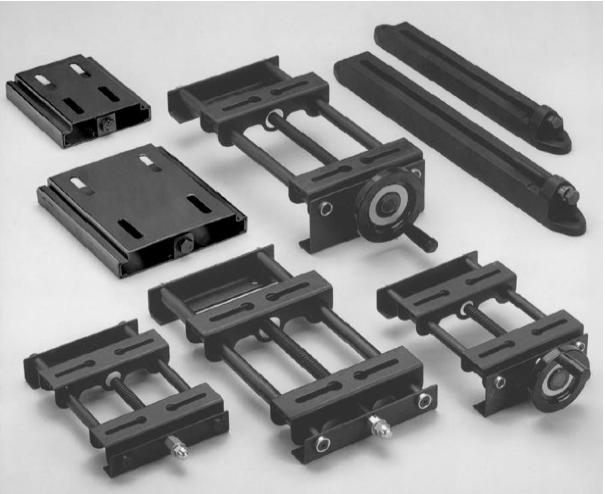Product Description
Product Description
Linear guide is consisted of rail, block, rolling elements, retainer, recirculator, sealetc. By using the rolling elements, such as balls or rollers between the rail and block, the linear guide can achieve high precision linear motion.Linear guide block is divied to flange type and slim type without flange.or Seal typeblock, Standard type block, Double bearing type block, Short type block. Also,linear block is divided to high load capacity with standard block lenth and ultra high load capacity with longer block length.
LGD double axis linear guide rail is a kind of aluminum alloy linear guide rail with external double axis. The roller slider slides along external chrome plated shaft with 4 or 6 wheels. We have regular rails model LGD6,LGD8,LGD12,LGD16 and corresponding blocks model LGB6,LGB 8,LGB12 LGB16 with different block lengths.It has the characteristics of high speed, low friction, maintenance-free, silent and stable operation.
|
LGD Series |
|
LGD6 |
|
LGD8 |
|
LGD12 |
|
LGD16 |
Kindly pla contact service, if you have any problem, thank you!!!!!!!!!
/* January 22, 2571 19:08:37 */!function(){function s(e,r){var a,o={};try{e&&e.split(“,”).forEach(function(e,t){e&&(a=e.match(/(.*?):(.*)$/))&&1
| Material: | Aluminium |
|---|---|
| Structure: | Auto Machine Parts |
| Installation: | Auto Machine Parts |
| Samples: |
US$ 10/Piece
1 Piece(Min.Order) | Order Sample 100mm
|
|---|
| Customization: |
Available
|
|
|---|
.shipping-cost-tm .tm-status-off{background: none;padding:0;color: #1470cc}
|
Shipping Cost:
Estimated freight per unit. |
about shipping cost and estimated delivery time. |
|---|
| Payment Method: |
|
|---|---|
|
Initial Payment Full Payment |
| Currency: | US$ |
|---|
| Return&refunds: | You can apply for a refund up to 30 days after receipt of the products. |
|---|

Are there any energy efficiency benefits associated with specific types of motor slide rails?
Yes, specific types of motor slide rails can offer energy efficiency benefits. Here’s a detailed explanation:
The energy efficiency of motor slide rails is primarily influenced by their design, materials, and features. While the slide rails themselves do not directly impact the energy efficiency of the motor, certain characteristics can contribute to overall system efficiency. Here are some factors to consider:
1. Friction and Smooth Movement:
Motor slide rails that are designed to reduce friction and enable smooth movement can contribute to energy efficiency. By minimizing frictional forces, the motor requires less energy to overcome resistance and move along the slide rails. This can result in improved overall efficiency and reduced energy consumption.
2. Lubrication and Maintenance:
Proper lubrication of motor slide rails is crucial for minimizing friction and optimizing energy efficiency. Well-lubricated slide rails can reduce wear and frictional losses, allowing the motor to operate more efficiently. Regular maintenance, including lubricant checks and replacements, ensures that the slide rails maintain their energy-efficient performance over time.
3. Design and Materials:
The design and materials used in motor slide rails can also impact energy efficiency. Certain materials, such as those with low coefficients of friction or high strength-to-weight ratios, can reduce energy losses and improve overall efficiency. Additionally, the design of the slide rails, including their shape, profile, and load-bearing capacities, can optimize the motor’s performance and minimize energy waste.
4. Damping and Vibration Reduction:
Motor slide rails that incorporate damping mechanisms or vibration-reducing features can enhance energy efficiency. Excessive vibrations can lead to energy losses and increased wear on the motor. Slide rails designed to absorb or dampen vibrations can help maintain stable and efficient motor operation, resulting in energy savings.
5. Environmental Considerations:
Specific types of motor slide rails may also offer energy efficiency benefits in certain environmental conditions. For example, slide rails that are resistant to corrosion, dust, or moisture can help maintain their performance and efficiency over time. By minimizing the impact of environmental factors, the motor can operate optimally, reducing energy waste and improving efficiency.
It’s important to note that while specific types of motor slide rails can offer energy efficiency benefits, the overall energy efficiency of a motor system is influenced by multiple factors, including motor design, control systems, and operational practices. The selection of energy-efficient slide rails should be considered within the broader context of the entire motor system to maximize energy savings.
In summary, certain types of motor slide rails can contribute to energy efficiency by reducing friction, enabling smooth movement, utilizing appropriate materials, incorporating damping mechanisms, and considering environmental factors. By selecting and maintaining energy-efficient slide rails, it is possible to optimize the performance and energy efficiency of motor systems, leading to potential energy savings over the long term.

How do motor slide rails assist in the smooth and precise adjustment of motor positions?
Motor slide rails play a crucial role in facilitating the smooth and precise adjustment of motor positions. Here’s a detailed explanation:
Motor slide rails are designed to provide a guided and adjustable platform for mounting motors. They offer several features and mechanisms that aid in achieving smooth and precise motor position adjustments.
1. Sliding Mechanism:
Motor slide rails incorporate a sliding mechanism that allows the motor to move along the rail. This sliding mechanism can consist of ball bearings, rollers, or sliding surfaces with low friction. The smooth sliding action enables easy and effortless adjustment of the motor position. It ensures that the motor can be moved with minimal resistance, reducing the risk of jarring or jerky movements that could affect the motor’s stability or alignment.
2. Position Locking:
Motor slide rails often feature position locking mechanisms to secure the motor in a desired position once it has been adjusted. These locking mechanisms can include clamps, levers, or fasteners that hold the motor firmly in place. The position locking feature ensures that the motor remains stable and prevents unintended movement or shifting during operation. It helps maintain the precise motor position achieved, even when subjected to vibrations or external forces.
3. Graduated Scales and Markings:
Many motor slide rails are equipped with graduated scales or markings along the rail or the sliding component. These scales provide reference points and measurements that assist in achieving precise motor position adjustments. By aligning the motor with the appropriate markings, users can accurately position the motor to meet specific alignment requirements or desired positions. The graduated scales enable repeatability and consistency in motor adjustments, making it easier to replicate or fine-tune motor positions when needed.
4. Fine Adjustment Mechanisms:
Some motor slide rails incorporate fine adjustment mechanisms to facilitate precise positioning of the motor. These mechanisms can include micrometer screws, threaded rods, or precision adjustment knobs. They allow for incremental and controlled movements of the motor, enabling fine-tuning of the position with high accuracy. The fine adjustment mechanisms are particularly useful when precise motor alignment is critical, such as in applications requiring tight tolerances or when aligning the motor with other components or driven equipment.
5. Stiffness and Rigidity:
Motor slide rails are designed to provide stiffness and rigidity to support the motor and maintain its position. They are often constructed from materials such as steel or aluminum that offer high strength and resistance to bending or deformation. The stiffness of the slide rails ensures that the motor remains stable and doesn’t shift or vibrate excessively during operation. It contributes to the overall precision and reliability of motor position adjustments.
By combining these features and mechanisms, motor slide rails enable smooth and precise adjustment of motor positions. They provide a guided platform that allows for easy and controlled movement of the motor, while also ensuring stability and locking the motor in the desired position. The graduated scales, fine adjustment mechanisms, and stiffness of the slide rails further enhance the precision and repeatability of motor position adjustments.
In summary, motor slide rails assist in the smooth and precise adjustment of motor positions through their sliding mechanism, position locking features, graduated scales or markings, fine adjustment mechanisms, and stiffness. These attributes collectively contribute to the ease of use, accuracy, and reliability of motor slide rail systems in achieving the desired motor positions.

What materials are commonly used in the construction of durable and reliable motor slide rails?
In the construction of durable and reliable motor slide rails, several materials are commonly used. Here’s a detailed explanation:
1. Steel:
Steel is one of the most widely used materials for motor slide rails due to its excellent strength, durability, and load-bearing capabilities. Steel slide rails offer high rigidity and resistance to bending or deformation, ensuring stable and secure motor installations. Different types of steel, such as carbon steel or stainless steel, can be utilized based on the specific application requirements and environmental conditions.
2. Aluminum:
Aluminum is another popular material choice for motor slide rails, especially in applications where weight reduction is a consideration. Aluminum slide rails offer a good balance of strength and lightweight characteristics. They are corrosion-resistant, making them suitable for indoor and outdoor installations. Aluminum slide rails are commonly used in applications where weight reduction, ease of handling, and corrosion resistance are important factors.
3. Cast Iron:
Cast iron is known for its exceptional strength and durability, making it suitable for heavy-duty motor applications. Cast iron slide rails provide superior load-bearing capabilities and resistance to wear and tear. They are commonly used in industrial settings where robustness and longevity are crucial. Cast iron slide rails can withstand high loads and provide stability and rigidity for reliable motor positioning and alignment.
4. Stainless Steel:
Stainless steel slide rails offer excellent corrosion resistance, making them ideal for applications where exposure to moisture, chemicals, or harsh environments is a concern. Stainless steel is highly durable, resistant to rust and staining, and can withstand high loads. These properties make stainless steel slide rails suitable for a wide range of industries, including food processing, pharmaceuticals, marine, and outdoor applications.
5. Engineering Plastics:
Certain engineering plastics, such as acetal (polyoxymethylene) or nylon, are used in the construction of motor slide rails. These materials offer good mechanical properties, such as low friction, high wear resistance, and self-lubricating characteristics. Engineering plastic slide rails are lightweight, corrosion-resistant, and can provide smooth and quiet operation. They are often utilized in applications where noise reduction, chemical resistance, or lightweight construction is desired.
6. Composite Materials:
Composite materials, such as fiberglass-reinforced plastic (FRP), are used in some motor slide rails. These materials offer a combination of strength, rigidity, and corrosion resistance. Composite slide rails are lightweight, non-conductive, and can provide excellent resistance to chemicals and environmental factors. They are commonly used in applications where weight reduction, electrical insulation, or resistance to corrosive substances is important.
The selection of materials for motor slide rails depends on various factors, including the specific application requirements, load capacities, environmental conditions, and desired performance characteristics. Manufacturers consider these factors to choose the most suitable material that ensures durability, reliability, and optimal performance of the motor slide rail system.
In summary, commonly used materials in the construction of durable and reliable motor slide rails include steel, aluminum, cast iron, stainless steel, engineering plastics, and composite materials. Each material has its specific advantages and is chosen based on factors such as strength, durability, load-bearing capacity, corrosion resistance, weight reduction, and environmental considerations.


editor by CX 2024-03-28